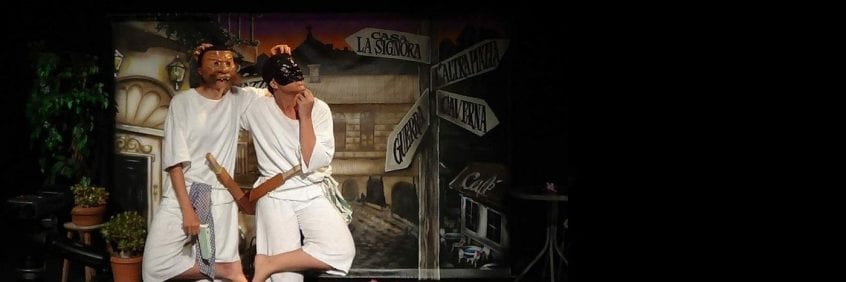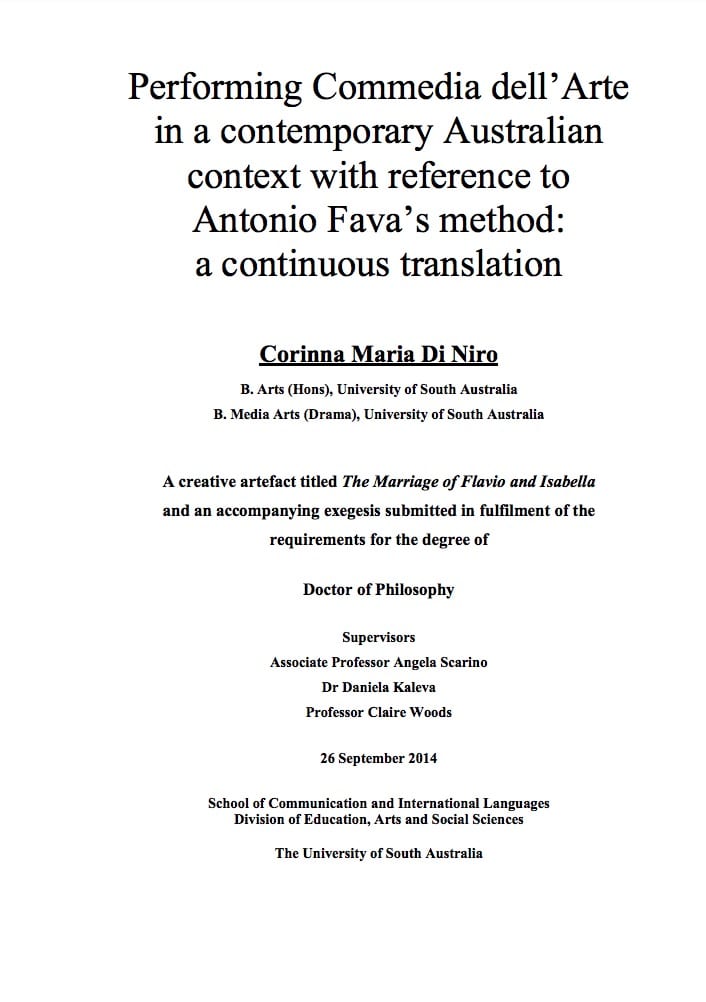Published in: Alma, University of South Australia, Sep 26, 2014
Continuous translation of Commedia dell’Arte involves a dual process of performance practice and an understanding of the genre’s history.
The creative artefact and exegesis discussed in this thesis focus on a process of continuous translation, which assists practitioners in working with the genre characteristics of Commedia dell’Arte in contemporary performance practice.
As Commedia dell’Arte travels over time and place, its reinterpretations move further away from its root source. This presents challenges for contemporary practitioners, particularly in Australia, as Commedia dell’Arte is not part of the local day-to-day culture.
The research focuses on the Italian form of Commedia dell’Arte created and performed by the Italian players, and how its intrinsic genre characteristics can be retained while translated with socio-cultural relevance when performed in a new time and place. In particular, it explores how the practice methods of Antonio Fava, the Italian Commedia dell’Arte master, can be applied to a different cultural context.
The creating and staging of the fully devised Commedia dell’Arte performance entitled The Marriage of Flavio and Isabella involved experimenting and working with and reflecting on Fava’s framework. The framework includes a set of reference points: fixed types, improvisation, multilingualism, mask and anachronism, and is based on two principles: innovation and faithfulness.
The accompanying exegesis is presented in two parts. The first highlights significant moments in the history of Commedia dell’Arte as it moved over time and place. This discussion reveals an interpretation gap that presents a challenge for creating performances, which are authentic in relation to genre characteristics, time and place.
The second part situates the research as practice-led. It examines the process of creating and performing The Marriage of Flavio and Isabella, addressing issues of authenticity through critical thinking and improvisation as a creative rehearsal method.
The extent to which Fava’s reference points are malleable such that the performance can be both authentic to the genre characteristics and authentic to audiences in Adelaide, South Australia is tested.


